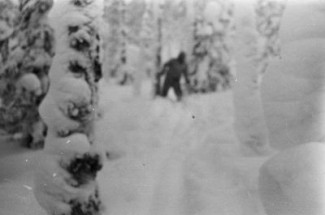INTERVIEW: Discovery Channel special unearths new Yeti evidence?

Discovery Channel is set to premiere the highly anticipated special, Russian Yeti: The Killer Lives, Sunday, June 1 at 9 p.m. The two-hour program follows Mike Libecki as he explores the infamous Dyatlov Pass incident, subject of movies, books and numerous legends. This TV project examines the fatal incident, which left nine college students dead in the Ural Mountains of Russia, through the lens of the Yeti, a mythical (or real?) beast that is rumored to be a Siberian-like Sasquatch.
Explorers, both expert and amateur, have been looking for the so-called missing link for generations. From Finding Bigfooot, the Animal Planet series returning in a couple of weeks, to the famous Roger Patterson video, Bigfoot and its many offshoots continue to transfix audiences.
Recently, Hollywood Soapbox exchanged emails with Dr. Jeffrey Meldrum, professor of anatomy and anthropology, and overall expert on primate evolution. He edits the online journal, The Relict Hominoid Inquiry out of Idaho State University (click here for more information).
In your research of primate evolutionary history, you have described several new extinct species. This research must be extensive, taking you around the world and in close examination of fossil records.
For you, what pushes a specimen over the edge into classification as a “new extinct species”. What are some of the clues you’re looking at for proper identification?

A new species, whether extinct or extant, rests upon the designation of a type specimen. The specimen has a diagnosis that distinguishes it from all other species.
You’ve published on a model that looks at primates as “striders” rather than strict “bipeds”. Could you describe a little more about these findings?
The phrase “from biped to strider” denotes the study of the pattern of the emergence of modern human bipedal walking and running. This involves morphologies and adaptations of the body, in particular the lower limb and foot (arch, Achilles’ tendon, shortened heel, etc.) that go beyond merely walking bipedally as the earliest hominids — on short legs with flat flexible feet.
You’ve explored issues of Sasquatch in North America. In your scientific / anthropological opinion, is there enough evidence to prove such a primate lived in North America (or continues to live)?
The conventions of zoological taxonomy require a type specimen to “prove” the existence of a species. Short of that, there are very compelling evidences that indicate the existence of an unrecognized species: e.g., footprints, hair, etc.
In your opinion, why does the Sasquatch question and other research that involves the evolution of primates interest people so much? Do you share that enthusiasm for finding the missing link(s)?
We are understandably an egocentric species and therefore have heightened interest in the species with greatest affinity to ourselves. Recall the sensation accompanying the discovery of the gorilla, not so long ago. The prospect of a species even more closely aligned with the human family naturally garners disproportionate attention. My research in paleoanthropology naturally makes this of keen interest to me — the prospect of another bipedal primate out there — perhaps a relict member of the human family tree.
When finding a footprint that may hold great value to your research, what’s going through your mind?
Sadly, the first thoughts are evaluating the credibility of the find, before I can assess its significance. Is it a hoax, or less sinister, a case of misidentification? Then I turn to a number of criteria that guide me in my assessment of the footprint and the inferred functional morphology of the foot that left it.
By John Soltes / Publisher / John@HollywoodSoapbox.com
-
Russian Yeti: The Killer Lives airs Sunday, June 1 at 9 p.m. on Discovery Channel.

